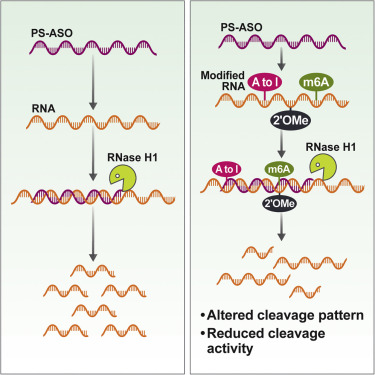What is RNASEH1 Protein
The RNASEH1 protein, also known as Ribonuclease H1, was initially discovered while studying the replication of viral and bacterial processes. It has since been understood as a vital protein in higher organisms, including humans. The RNASEH1 gene is located on chromosome 2 in humans at 2p25.3. This gene was extensively studied following its identification, leading to a greater understanding of the protein structure and processing chains of RNASEH1.
The physical structure of the RNASEH1 protein comprises both an RNA-binding domain and a DNA-binding domain. The RNA-binding domain functions by interacting with the RNA component of an RNA-DNA hybrid, while the DNA-binding domain interacts with the DNA duplex's minor groove. The resulting RNASEH1/RNA:DNA complex provides a detailed understanding of the interactions that dictate RNASEH1 recognition and cleavage of the RNA strand in the RNA-DNA hybrid particles.
Function of RNASEH1 protein
The primary function of the RNASEH1 protein is to cleave the RNA in RNA-DNA hybrids. Fundamentally, this process protects the genome from R-loop accumulation, which could cause genome instability and transcription-replication conflicts. Simply put, RNASEH1 preserves DNA integrity, primarily during DNA replication and repair.
The RNASEH1 protein has a crucial role in the initiation of mitochondrial DNA replication too. Mitochondrial DNA replication is where the RNA primer is synthesized, which is followed by DNA synthesis on the leading strand, while the original parental H-strand is displaced into an RNA:DNA hybrid. Here, RNASEH1 performs the necessary function of primer removal by cleaving off the RNA primer at the mitochondrial replication origin.
The RNASEH1 protein's significance is evidenced by studies showing its involvement in various signaling pathways. The protein is implicated in several cellular processes, including the RNA transport pathway and the RNA Polymerase I Promoter Opening pathway.

(Katelyn A. et al, 2022)
RNASEH1 protein related diseases
Given its important role in preserving genetic integrity, malfunctions of RNASEH1 protein can cause serious health disorders. Mutations of the RNASEH1 gene are associated with progressive external ophthalmoplegia, a condition that weakens the muscles controlling the eyes and eyelids. Furthermore, some studies have also linked RNASEH1 dysfunction to chromosomal instability and cellular senescence, which highlights possible connections with aging and cancer.
RNASEH1 protein's applications in biomedical
In terms of biomedical applications, the RNASEH1 protein is a promising target for drug discovery and development. Given that RNASEH1 dysfunction is associated with various diseases, developing drugs that can modulate RNASEH1's activity could potentially lead to innovative treatments. For instance, in cancer research, since rapid cell replication in tumors often leads to DNA damage, drugs boosting RNASEH1 functionality could potentially help preserve DNA integrity in cancerous cells, thereby slowing tumor growth.
Moreover, the potential application of RNASEH1 protein extends beyond drug development. There is an increasing appreciation for the protein in gene editing, specifically using the CRISPR-Cas9 system. Given its functionality in breaking down RNA in RNA-DNA hybrids, it could be used in conjunction with CRISPR-Cas9, essentially paving the way for more sophisticated gene editing techniques.
The RNASEH1 protein, with its broad spectrum of functionality and pathways, has a profound impact on human health and disease. From DNA preservation to potentially spearheading revolutions in gene editing and cancer treatment, the protein's potential in the biomedical domain is vast. Through ongoing research, we are likely to uncover even more about the RNASEH1 protein and, with such knowledge, unlock new avenues in treating human diseases and advancing human health.
Our Featured Products
| Cat.No. | Product Name | Species | Source (Host) | Tag |
|---|---|---|---|---|
| RNASEH1-4892H | Active Recombinant Human RNASEH1 protein, His-tagged | Human | E.coli | His |
| RNASEH1-2325H | Recombinant Human RNASEH1, GST-tagged | Human | E.coli | GST |
| RNASEH1-164H | Recombinant Human RNASEH1 Protein | Human | E.coli | N/A |
| RNASEH1-4321H | Recombinant Human RNASEH1 protein, MYC/DDK-tagged | Human | HEK293 | Myc/DDK |
| Rnaseh1-5536M | Recombinant Mouse Rnaseh1 Protein, Myc/DDK-tagged | Mouse | HEK293T | Myc/DDK |
| RNASEH1-4722R | Recombinant Rat RNASEH1 Protein, His (Fc)-Avi-tagged | Rat | HEK293 | His (Fc)-Avi |
| RNASEH1-3730R | Recombinant Rhesus Macaque RNASEH1 Protein, His (Fc)-Avi-tagged | Rhesus Macaque | HEK293 | His (Fc)-Avi |
Reference
- Katelyn A. Doxtader Lacy, Xue-hai Liang, Lingdi Zhang, Stanley T. Crooke. RNA modifications can affect RNase H1-mediated PS-ASO activity. Nucleic Acids. May 11, 2022. DOI: https://doi.org/10.1016/j.omtn.2022.05.024

